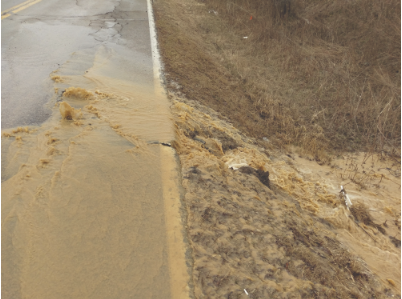Where Innovation and Water Leak Detection Meet

Where Innovation and Water Leak Detection Meet
Step 1: Find the leak
Step 2: Fix the leak
Sounds pretty easy, right? Not exactly. While leak detection is the simplest form of water loss management, it can also be one of the hardest tasks for a utility or municipality to tackle. The dripping faucets, worn toilet flappers, and leaking valves that cause leaks within a structure are easily detectable. However, leaks located in underground pipes are a whole other story.
There are a number of standard practices to help with underground leak detection – and also a few unorthodox ones. While obviously not visible to the naked eye, it’s up to utilities to discover what method works for them. Continue reading to get familiar with some unconventional innovative ways in which water leaks can be detected within underground pipelines:
Mobile App
There’s an app for that! A web application can be used to manage, analyze, and visualize leak alerts, along with the ability to update their status. How does it work? By combining advanced acoustic detection principles with the power of cloud processing, accurate leak correlation and location becomes possible. The mobile app is presented as a one person and one click operation.
Satellite Images
This leak detection method includes satellites that orbit the earth at a high altitude, processing images that cover up to 1,300 square miles. The raw imagery is overlaid on GIS, analyzed, and becomes a graphic leakage report overlaid on a map showing streets and pipes. The satellite image technique requires no preparation and significantly reduces field labor. In addition, an entire water system can be surveyed a few times a year vs. the usual every two or three years.
Trained Dogs
Due to the highly sensitive noses that dogs have, a water utility in Australia is training two dogs to be capable of sniffing out hidden leaks in water pipes up to two feet deep. During the field trials, the dogs were specifically trained to detect the scent of distribution system water and ignore other scents such as rainwater or pipes and fittings. Due to the success already seen with this method, Britain is also experimenting with deploying dogs and their superior sense of smell as a leak detection tool.
Wasting water, flooding, sinkholes, and damage to property are just a few of the ways in which havoc can be wreaked due to an underground water pipe leak. A utility can simply wait for the public or its staff to notice these visible signs or they can take action beforehand. Thanks to the technology and innovative ideas dedicated to detecting such leaks, utilities have many options to choose from. While it’s uncertain if any one method is better than the rest, it may be worth exploring!
